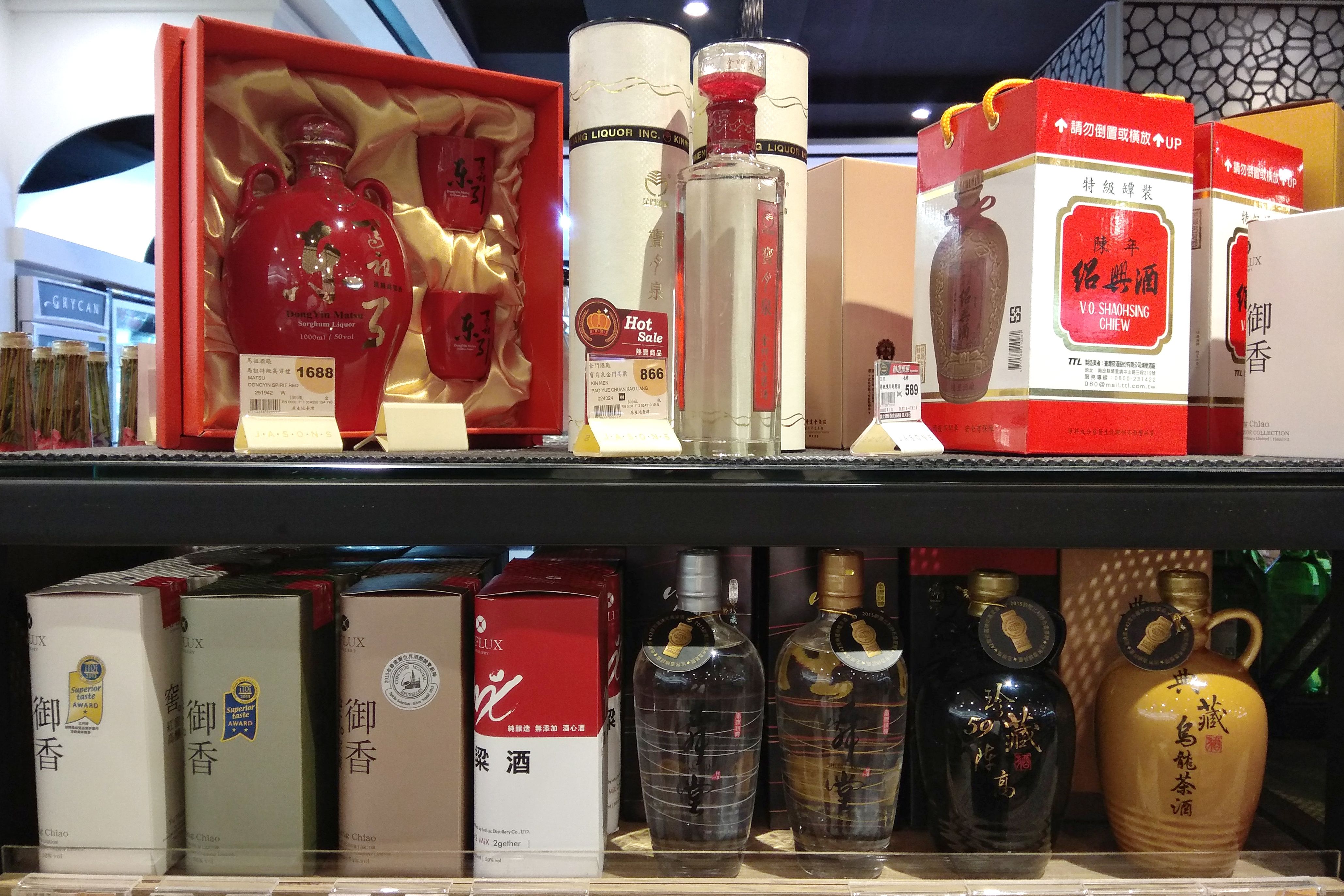CIL-UHPLC–HRMS Profiles Carbonyl Compounds in Baijiu Daqu Samples
Sauce-flavor or sauce-aroma baijiu, one variant of a popular Chinese liquor, is treated with a fermentation starter called daqu, giving the concoction a unique taste profile, and scientists want more information about how it can inform the manufacturing of higher-quality baijiu.
A new study in the Journal of Chromatography A details the profiling and annotation of carbonyl compounds in sauce-flavored baijiu daqu using chromatographic methods (1). But before explaining the chlorine isotope labeling-assisted ultrahigh-pressure liquid chromatography–high-resolution mass spectrometry (CIL-UHPLC–HRMS) process executed in this experiment, as illustrated by the 14 co-authors of this research in China, a definition of some sort for this distinctive Chinese beverage should be provided.
TAIPEI, TAIWAN - JUNE 26, 2018 : Various brands of Chinese Liquor display on grocery store shelf, Taipei. Baijiu is a type of Chinese traditional distilled liquor. | Image Credit: © ltyuan - stock.adobe.com

According to the American Chemical Society’s Chemical & Engineering News, baijiu is the world’s most-consumed spirit at a rate of 4 billion liters per year (2). But it is not as prevalent in the Western world, much less when broken out into “yellow,” “white,” and “black” samples as collected by the researchers in this study from fermentation rooms in the spring, summer, and fall, respectively, provided by bottler Kweichow Moutai Town in Zunyi, China (1).
As indicated, sauce-flavored baijiu has an aroma suggesting soy sauce, and is fermented using a starter known as daqu. The Journal of the Institute of Brewing describes daqu as having a “saccharifying” effect, being itself fermented from wheat, barley, or peas (baijiu, for its part, is derived from sorghum) (2,3). The researchers in the Journal of Chromatography A study sought more information on the carbonyl compounds in baijiu daqu, which they said greatly influence baijiu flavor and can be indicators of what is needed to manufacture a high-quality baijiu (1).
To properly screen carbonyl compounds, the researchers said a pair of light and heavy isotope derivatization reagents are typically required, but the latter can be expensive or commercially unavailable, making their deployment difficult (1). So for this experiment, a new labeling reagent was used, 4-Chloro-2-hydrazinylpyridine (HP-Cl), which was reported to provide good coverage and high sensitivity.
Previous attempts to determine carbonyl compounds in baijiu daqu, according to the researchers, have employed either gas chromatography (GC) or liquid chromatography (LC) coupled to mass spectrometry (MS). But neither GC–MS nor LC–MS, they said, allows for simultaneous detection of both polar and nonpolar compounds (1). The goal of combating the trace amounts and low MS signal responses typical of carbonyl compounds in baijiu daqu resulted in the research team using ultrahigh-pressure liquid chromatography coupled to high-resolution mass spectrometry (UHPLC–HRMS) to detect some 487 compounds, 64.5% of which (314 in total) were identified either positively or putatively. Further confirming the effectiveness of these methods were good results in linearity, precision, and limits of detection, as the study reported.
Even if baijiu daqu may remain a mystery to much of the world, and perhaps still an acquired taste to those familiar with it, the precise quantitation of carbonyl compounds contained therein provide a guidepost for comprehensive analysis of such compounds in other complex matrices.
References
(1) Xie, X.; Chen, L.; Chen, T.; et al. Profiling and annotation of carbonyl compounds in Baijiu Daqu by chlorine isotope labeling-assisted ultrahigh-performance liquid chromatography–high resolution mass spectrometry. J. Chromatogr. A 2023, 1703, 464110. DOI: 10.1016/j.chroma.2023.464110
(2) Zhang, C. What’s baijiu, and where does its unique flavor come from? Chem. Eng. News 2018, 96 (33). https://cen.acs.org/environment/food-science/What-s-baijiu-and-where-does-its-unique-flavor-come-from/96/i33 (accessed 2023-07-27).
(3) Zheng, X.-W.; Tabrizi, M.R.; Nout, M.J.R.; Han, B.-Z. Daqu – A Traditional Chinese Liquor Fermentation Starter. J. Inst. Brew. 2012, 117 (1), 82-90. DOI: 10.1002/j.2050-0416.2011.tb00447.x
Identifying and Rectifying the Misuse of Retention Indices in Gas Chromatography
October 31st 2024LCGC International spoke to Phil Marriott and Humberto Bizzo about a recent paper they published identifying the incorrect use of retention indices in gas chromatography and how this problem can be rectified in practice.
HILIC Peptide Retention Times Predicted Using New Approach
October 29th 2024Manitoba Centre for Proteomics and Systems Biology scientists produced a new means of predicting peptide retention times for hydrophilic interaction liquid chromatography (HILIC) at acidic pH in formic-acid based eluents.